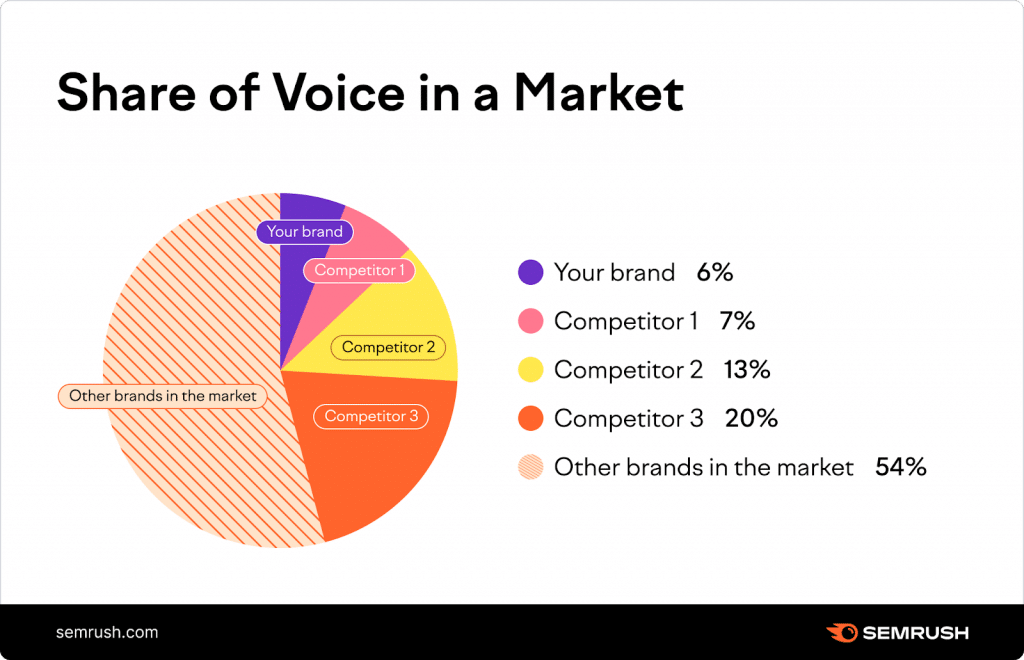When I first started my business, I learned how important it was to understand our position in comparison to our competition. I recall spending numerous hours attempting to comprehend industry reports, only to get more puzzled about our market position. That’s when I realized the value of competitive benchmarking. It is a game changer for any firm looking to stay ahead of the competition. In this article, I’ll explain what I’ve learned about competitive benchmarking and provide a detailed, step-by-step approach to getting you started.
What is Competitive Benchmarking?
Competitive benchmarking is the process of comparing your company’s performance, procedures, and practices to those of top competitors in your industry. This comparison assists in identifying areas for improvement in your organization as well as ideas that may provide you with a competitive advantage. According to a Bain & Company study, organizations that frequently assess their performance experience a 15% gain in efficiency and production.
Key Takeaways
- Effective competitive benchmarking involves defining clear objectives, identifying relevant competitors, selecting appropriate metrics, collecting data, analyzing gaps, and developing a detailed action plan.
- Using both primary and secondary data sources provides a well-rounded perspective on your competitors’ strengths and weaknesses, allowing for more informed strategic decisions.
- Regular monitoring and periodic reviews are essential to adapt and refine strategies based on the latest competitive insights and market conditions.
- Prioritizing areas for improvement based on benchmarking analysis helps focus efforts on the most impactful initiatives, enhancing overall business performance.
- Competitive benchmarking helps identify gaps and opportunities, leading to better positioning in the market and increased competitiveness.
Who are Your Competitors?
It is critical to thoroughly assess who you want to benchmark your business against. Examine your KPIs and identify organizations that consistently perform well in the areas you want to improve. It’s worth noting that you don’t have to limit your search to competitors; you can also seek companies from other industries. You could compare your business to:
- Competitors
- Similar-sized companies in your field.
- Similar-sized companies in a relevant industry
- Industry leaders
Competitive benchmarking, like any other business function, requires (at least) some resources to be allocated to it correctly. This means you should be selective about whom you run competitive benchmarks against. It’s pointless to simply “benchmark against everybody,” so choose who you track carefully.
Competitive Benchmarking vs Analysis
It is critical to understand the distinction between benchmarking and analysis while acquiring competitor data.
Benchmarking compares your brand’s statistics to competitors in the industry, suggesting opportunities for improvement. Common benchmarking metrics include cost, productivity, and quality.
With access to this data, brands can make the required changes to better their overall brand and stay ahead of the competition.
Whereas analysis is a thorough examination of the many characteristics of the industry’s leading competitors.
For example, it appears that they are gathering information on their methods, strengths, and vulnerabilities. Furthermore, analysis often yields insights regarding a competitor’s products and marketing strategies.
Finally, benchmarking and analysis are critical for knowing competition metrics. Benchmarking aggressively compares rivals’ data to your brand, whereas analysis collects thorough information about what a competing brand offers.
Why Is Competitive Benchmarking Important?
Understanding your market position is critical for success and development. Competitive benchmarking provides various benefits:
- Performance Improvement: By identifying gaps and areas for improvement, businesses may boost their performance and productivity.
- Strategic Planning: Benchmarking offers useful insights that help with strategic planning and decision-making.
- Innovation: Learning from competitors can spur innovation and keep you ahead of market trends.
The Best Way to Select Competitive Benchmarks
With so many options for what might be included, how do you determine your competitive benchmarks?
Your existing KPIs are a fantastic place to start, but there is an opportunity to broaden them.
Determine why you want to benchmark in the first place. Consider what metrics could serve as early indicators for more significant outcomes.
For example, if your share of voice on social media declines and a competitor grabs the top spot, it’s time to investigate. Either something is going wrong on your end, or they are attempting something new. You have to find out either way.
This demonstrates how just comparing your performance to your previous self can miss a key aspect of the picture.
You should also talk with various areas of the business to see what would be beneficial to include. This ensures that benchmarking is useful to as many people as feasible within the firm. Don’t get too focused on top-line metrics.
How To Select Competitors To Benchmark Against
There are a variety of approaches here. Competitors and your relationship with them can vary greatly, so who you can include is determined by what you hope to gain from it.
One option is to set benchmarks versus your closest competitors. In terms of size and success, they are likely to be the most similar to you. This offers you a decent idea of who your direct competitors are as well as who is most likely to follow you.
This is an excellent choice for mid to near-term planning and capitalizing on quick chances. You may have noticed that your key competitor’s SEO performance has been drifting downhill in recent months. That could imply arranging your own SEO work to replace the traffic they’ve lost while avoiding the same fate for yourself.
Of course, you may have greater objectives than fending off your closest opponents. You may be gazing at the biggest and finest in your field, with aspirations to become one of them.
In that situation, benchmarking against them can provide insight into how to replicate their success. The data may appear discouraging at first, but with research and analysis, you may discover common practices among larger organizations, or areas where you are particularly weak in comparison to them.
Read Also: CONTENT MARKETING: A User-Guide to Developing Your Business
Obviously, it is not as simple as doing what the greatest do, but it can provide you with significant insight into how they function and work. It also provides an insight into how they lay the groundwork for future work and projects.
Another option is to look down the table. There are always lesser enterprises nipping at others’ heels. In an era when disruption is upending entire industries, it’s a mistake to ignore the little guys.
It can be beneficial to benchmark against the game’s smaller players. It means you can tell who is doing well and how. That way, you’ll be prepared when they become more successful and catch up. This should help you avoid getting caught off guard.
Finally, the purpose of the benchmarking will determine who to include. Keep in mind that combining everyone, big and small, will result in your reports losing concentration. Don’t let the data become muddled, hiding critical insights from view. Segment your competitors into various reports based on your desired goals.
What Metrics Should You Consider For Competitive Benchmarking?
There are numerous metrics to consider while performing competitive benchmarking:
#1. Market share of traffic

Market share of traffic is the percentage of traffic that your website receives in a specific market.
It measures how well you compete with other companies in your market.
A significant share of traffic indicates that you hold a dominant position. A low share indicates that you have room to expand and capture more of the market.
Here is the formula for calculating this metric.
Market share of traffic = (your company’s traffic/market traffic) x 100.
#2. Website Traffic by Channels
Website traffic by channel is the breakdown of traffic to your website originating from various channels, such as organic search, paid search, social media, email, referral, and so on.
Here’s how a report describing visits from different channels looks like in Google Analytics 4 (GA4):
When you compare your website’s traffic stats to those of your competitors, it shows how popular it is in your industry.
#3. Social Media Followers
Social media followers are the people who follow your brand on social media sites such as Facebook, Instagram, X (previously Twitter), and LinkedIn.
Having more followers than competitors indicates that you have higher brand recognition and affinity. It also suggests you’re more likely to get engaged.
#4. Keyword Rankings

Keyword rankings are the positions your website holds in search results for specific words or phrases.
They indicate how visible your website is to search engines.
Higher keyword rankings indicate increased visibility for related searches. Lower rankings indicate possibilities to improve your SEO.
#5. Share of Voice

Share of voice (SoV) analyzes how visible your brand is across channels in comparison to your competitors.
It takes into account the entire digital landscape, including organic search, social media mentions, and press coverage.
A higher share of voice suggests that your brand is better represented than your competitors.
Step-by-Step Guide to Effective Competitive Benchmarking

#1. Identify your objectives
Before beginning the benchmarking process, it is critical to clarify your objectives. What do you want to achieve? Are you wanting to optimize certain processes, increase overall performance, or better understand market trends? Clear objectives can help you focus your benchmarking efforts and collect useful data.
Example: When I first started benchmarking for my organization, our main goal was to enhance our customer service operations. We intended to improve response times while increasing client satisfaction.
#2. Select competitors for benchmarking
Choosing the appropriate competitors is critical. Choose organizations that are industry leaders or that excel in the areas you want to improve. It is also beneficial to include both immediate competitors and industry leaders.
Example: We chose three top-performing competitors known for providing exceptional customer service. This combination enabled us to grasp various approaches and excellent practices.
#3. Determine Metrics and Data Collection Methods
Determine the critical metrics you will utilize for comparison. These metrics should be both quantitative and relevant to your objectives. Financial performance, customer happiness, market share, and operational efficiency are all often used metrics.
Example: For customer service benchmarking, we concentrated on metrics such as average response time, customer satisfaction scores, and first contact resolution rates.
#4. Gather data
Collect data from a variety of sources, including industry studies, competition websites, consumer feedback, and market analysis tools. Surveys and interviews can also yield significant information. Ensure that the data is reliable and up to date.
Example: To obtain a comprehensive view, we collected data from consumer feedback sites, industry reports, and customer satisfaction surveys.
#5. Analyze data and identify gaps
Analyze the data to find gaps and places where your organization falls behind. Look for patterns and trends that reveal strengths and weaknesses. This analysis can help you determine where improvements are required.
Example: Our analysis found that our response times were much slower than our competitors, which had a considerable impact on customer satisfaction.
#6. Develop action plans
Create action plans to remedy the gaps revealed by your analysis. Establish attainable objectives and dates for implementation. Make sure the action plans are detailed, quantifiable, and realistic.
Example: We created an action plan to streamline our customer service operations, which included adopting new ticket management software and training employees to enhance response times.
#7. Monitor progress and review
Monitor your progress regularly and assess the impact of any modifications that have been introduced. Adjust your strategies as necessary to maintain ongoing progress. Benchmarking is not a one-time exercise, but rather a continuing practice.
Example: We tracked our customer service metrics monthly and adjusted our strategy based on the outcomes. This continual review allowed us to make considerable changes over time.
Challenges of Competitive Benchmarking
#1. Data Availability and Reliability
Obtaining precise and dependable data can be difficult. Competitors may not always give detailed information, making it harder to gain a comprehensive understanding.
Example: We encountered difficulties in obtaining comprehensive reaction time statistics from several competitors. To solve this, we combined publicly available information with industry averages.
#2. Keeping Up With Industry Changes
The corporate climate is always changing, making it difficult to stay current. Staying relevant requires you to update your benchmarking data and methods regularly.
Example: We made it a point to evaluate our benchmarking data quarterly to ensure that it reflected the most recent industry trends and changes.
#3. Resource constraints
Benchmarking can be time-consuming, requiring work and skill. Companies with limited resources may struggle to undertake thorough benchmarking.
Example: At first, our tiny team struggled with the time required for benchmarking. We overcame this issue by streamlining the procedure with benchmarking software tools.
Competitor Benchmarking Mistakes to Avoid
There are red flags in benchmarking and competitive intelligence research. You must be proactive in ensuring that you receive the finest quality data from an outsourced provider.
As always, completing research on your competition while also conducting your own is critical. A strong outsourced team, such as Drive Research, can be really beneficial, but you must first understand your competition.
When hiring a third-party team, the most important elements to consider are understanding the project parameters, who the target audience is, and ensuring the data is credible.
Paying close attention to the demographic mix of the responders on your own will boost your confidence in the procedure.
Top Competitive Benchmarking Tools
Below is a collection of competitive benchmarking tools that can assist you in gathering data, analyzing performance, and developing plans to stay ahead of the competition:
#1. Ahrefs
- Features: Keyword research, backlink analysis, content gap analysis, competitor analysis, and rank tracking.
- Usage Examples: Analyze rival backlinks to uncover linking opportunities; track keyword ranks to compare performance.
- Price: Starts at $99 per month.
#2. SEMrush
- Features: Competitor analysis, keyword research, website audit, backlink analysis, and traffic analytics.
- Usage Examples: Conduct a thorough competitor analysis to discover strengths and weaknesses, and monitor organic and paid search performance.
- Price: Starts at $119.95 per month.
#3. Mooz Pro
- Features: Keyword research, link building, site auditing, rank tracking, and on-page optimization.
- Usage Examples: Use the keyword explorer to discover high-value keywords, track site health, and compare it to competitors.
- Price: Starts at $99 per month.
#4. SpyFu
- Features: Competitive keyword analysis, backlink analysis, PPC research, and domain comparison.
- Usage Examples: Analyze competition PPC campaigns to determine which keywords your competitors are ranking for.
- Price: Starts at $33 per month.
#5. SimilarWeb
- Features: Includes website traffic analysis, competitor analysis, industry analysis, and keyword research.
- Usage Examples: Compare website traffic and engagement metrics to find the best-performing competitors in your field.
- Pricing: Tailored pricing based on requirements.
#6. BuzzSumo
- Features: Includes content research, influencer identification, competitive content analysis, and trend tracking.
- Usage Examples: Examine competitor material to see what resonates with viewers, and find important influencers in your field.
- Price: Starts at $99 per month.
#7. Alexa from Amazon
- Features: Website audits, keyword research, competitor analysis, and backlink analysis.
- Usage Examples: Compare your site to competitors and identify keyword opportunities and content gaps.
- Price: Starts at $79 per month.
#8. Kantar
- Features: Market research, competitive analysis, media performance, and brand tracking.
- Usage Examples: Use market analytics to benchmark against competitors and monitor brand performance over time.
- Pricing: Tailored pricing based on requirements.
#9. TrackMaven
- Features include content benchmarking, social media analysis, competitive analysis, and marketing performance metrics.
- Usage Examples: Compare the performance of your content to competitors and analyze social media engagement metrics.
- Pricing: Tailored pricing based on requirements.
#10. Comscore
- Features include audience measurement, media analytics, competitive analysis, and advertising analytics.
- Usage Examples: Analyze audience behavior and media consumption habits, then compare advertising performance to competitors.
- Pricing: Tailored pricing based on requirements.
Using these competitive benchmarking tools allows you to acquire useful insights into your competitors’ strategies, discover areas for improvement, and make data-driven decisions to improve your business performance.
Competitive Benchmarking Template
Using the correct tools and templates can make the benchmarking process easier and more efficient. A complete competitive benchmarking template can assist you in collecting and analyzing data, tracking progress, and developing actionable insights.
Conclusion
Competitive benchmarking is an effective strategy for firms seeking to enhance performance and obtain a competitive advantage. Following a systematic approach allows you to identify areas for improvement, establish effective plans, and achieve your business objectives. Are you ready to take your business to the next level with competitive benchmarking?
Related Articles
- These 10 Root Cause Analysis Tools Will Help You Solve Any Problem Fast
- How To Measure Reach: Effective Tools and Strategies
- The 13 Landing Page Optimization Tools Experts Don’t Want You Using (Because They’re Too Effective)
- 13 Best Keyword Monitoring Tools in 2024
- Top 33 Social Media Analysis Tools In 2024






